As a proof-of-concept I need to create a HTTP server which on GET request should start continuous stream of non-encoded/non-compressed audio data - WAV, PCM16. Let's assume the audio data are chunks of 4096 randomly generated mono audio samples @44.1kHz sampling rate.
What should I put in the HTTP response header in order to browser on the other end start a player in its UI for the user to listen in realtime?
I was reading about "Transfer-Encoding: chunked", "multipart", mimetype="audio/xwav", but still not sute what and how to use...
Great would be if someone can give me an exact example on Python/Flask because I'm not so confident with the web development.
PS1: Replacing HTTP server with an embedded device with limited HW power will be the next stage after the PoC.
PS2: This is the code which actually works and sends an WAV chunk as a single HTTP response:
from flask import Flask, Response,render_template
import pyaudio
import audio_processing as audioRec
app = Flask(__name__)
def genHeader(sampleRate, bitsPerSample, channels, samples):
datasize = samples * channels * bitsPerSample // 8
o = bytes("RIFF",'ascii') # (4byte) Marks file as RIFF
o += (datasize + 36).to_bytes(4,'little') # (4byte) File size in bytes excluding this and RIFF marker
o += bytes("WAVE",'ascii') # (4byte) File type
o += bytes("fmt ",'ascii') # (4byte) Format Chunk Marker
o += (16).to_bytes(4,'little') # (4byte) Length of above format data
o += (1).to_bytes(2,'little') # (2byte) Format type (1 - PCM)
o += (channels).to_bytes(2,'little') # (2byte)
o += (sampleRate).to_bytes(4,'little') # (4byte)
o += (sampleRate * channels * bitsPerSample // 8).to_bytes(4,'little') # (4byte)
o += (channels * bitsPerSample // 8).to_bytes(2,'little') # (2byte)
o += (bitsPerSample).to_bytes(2,'little') # (2byte)
o += bytes("data",'ascii') # (4byte) Data Chunk Marker
o += (datasize).to_bytes(4,'little') # (4byte) Data size in bytes
return o
FORMAT = pyaudio.paInt16
CHUNK = 102400 #1024
RATE = 44100
bitsPerSample = 16 #16
CHANNELS = 1
wav_header = genHeader(RATE, bitsPerSample, CHANNELS, CHUNK)
audio = pyaudio.PyAudio()
# start Recording
stream = audio.open(format=FORMAT, channels=CHANNELS,
rate=RATE, input=True, input_device_index=10,
frames_per_buffer=CHUNK)
# print "recording..."
@app.route('/')
def index():
"""Video streaming home page."""
return render_template('index2.html')
@app.route('/audio_unlim')
def audio_unlim():
# start Recording
def sound():
#while True:
# data = wav_header + stream.read(CHUNK)
# yield(data)
data = wav_header + stream.read(CHUNK)
yield(data)
return Response(sound(),
mimetype="audio/x-wav")
if __name__ == "__main__":
app.run(host='0.0.0.0', debug=True, threaded=True,port=5000)
and the index2.html
<!DOCTYPE html>
<html lang="en">
<head>
<meta charset="UTF-8">
<meta name="viewport" content="width=device-width, initial-scale=1.0">
<meta http-equiv="X-UA-Compatible" content="ie=edge">
<title>Document</title>
</head>
<body>
<audio controls>
<source src="{{ url_for('audio_unlim') }}" type="audio/x-wav;codec=pcm">
Your browser does not support the audio element.
</audio
</body>
</html>
What to change in order to achieve continuous stream of chunks?
